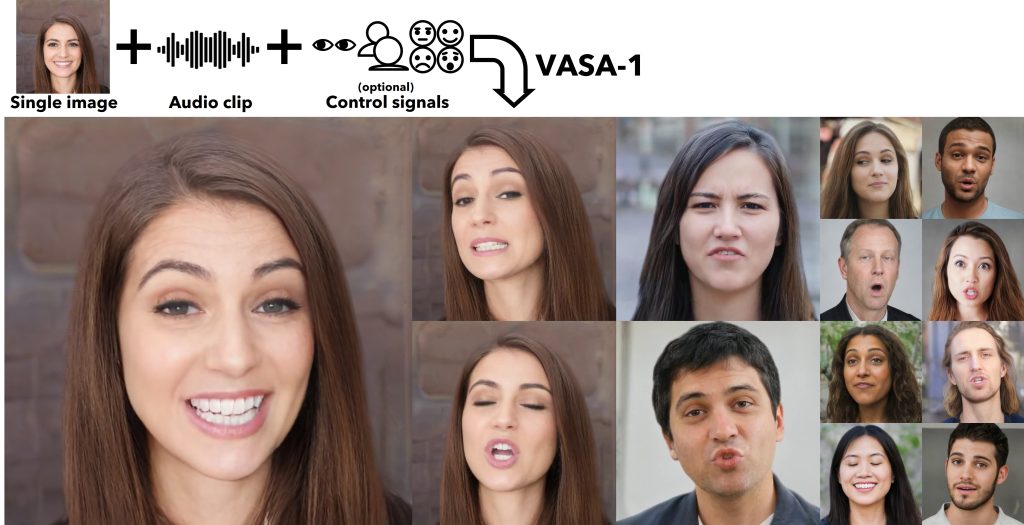Microsoft recently announced the launch of VASA 1, an AI model framework aimed at creating realistic talking faces for virtual characters. This innovative framework focuses on Visual Affective Skills (VAS), enabling the generation of lifelike short videos using just a single static image and an accompanying speech audio clip. VASA-1 provides users with a range of options for video customization, allowing for tailored adjustments to be made according to individual preferences.

In a recent announcement on its Research page, Microsoft unveiled a groundbreaking AI model designed to synchronize lip movements with audio while capturing a broad spectrum of facial expressions and natural head movements. Dubbed VASA 1, this model promises to deliver top-tier video content featuring realistic facial dynamics and head motions. Notably, VASA 1 supports the real-time generation of high-resolution 512 x 512 videos at up to 40 frames per second, boasting minimal starting latency.
Impressively, VASA 1 excels in achieving flawless lip-sync without any noticeable discrepancies in the final output. Moreover, it goes beyond mere lip movements by factoring in additional elements such as eye gaze direction, head distance, emotion offsets, and various other nuances. Notably, this AI model exhibits adaptability by accommodating non-English speech and even facilitating the creation of singing videos when necessary.
Dear cultured audience, we imagine you have seen many things – but what about Mona Lisa lip-synching to Anne Hathaway rapping 'Paparazzi'?
— Euronews Culture (@euronewsculture) April 18, 2024
Microsoft’s new AI tool, VASA-1, can animate static images with vivid emotion (the eye contact from Mona is intense👀.)
Credit: Microsoft pic.twitter.com/12y2PmjZsd
While acknowledging its utility, the brand remains mindful of the potential misuse associated with VASA-1. However, Microsoft has not provided explicit details on its strategies to combat the proliferation of deep-fake videos. Instead, the company emphasizes VASA-1’s role in enhancing forgery detection efforts.
The company acknowledges the possibility of misuse but emphasizes that the primary goal is to promote educational equity, improve accessibility for individuals with communication challenges, and offer companionship or therapeutic support.
While the company assures that the primary focus will revolve around research, the prospect of it becoming accessible to the public raises concerns. There are also speculations suggesting potential integration with OpenAI’s Sora platform, considering its significant investment in the latter. However, these claims should be approached with caution. Stay tuned for further updates on any significant developments in this space.



